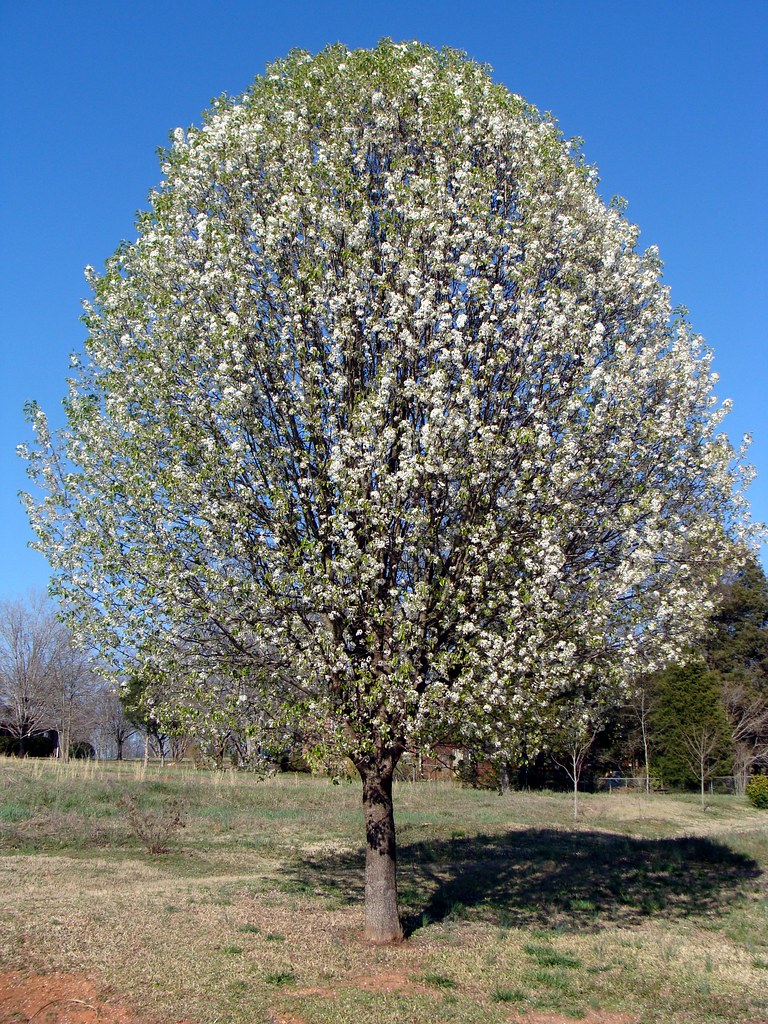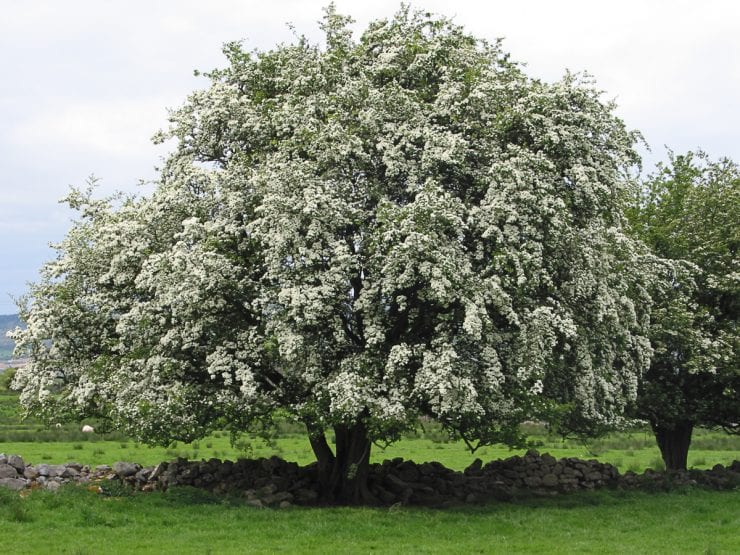
It’s in full bloom now, so you may have noticed a small/medium sized tree blooming white along our roadsides the past few weeks – blooming white, in round flower clusters. It’s everywhere, up and down our major and minor roads and in fields. These trees are descendants of the Bradford Pear, a cultivated variety of Pyrus calleryana, the Callery Pear, and they are a classic example of what is known as an invasive species.
What is an invasive species? It’s an introduced organism that spreads so much, without any controls, that it causes harm. What kind of harm, what do we mean by that? Some invasives affect human health – think of West Nile, carried by invasive viruses, or invasive snails are carriers of meningitis, and fire ants. Some invasives are problems for recreation as weeds degrade habitat for hunting, fishing and boating – think of the Asian Carp in the Great Lakes. They cause enormous economic harm – many agricultural pests are invasive plants or pathogens; some invasive plants make areas more fire prone (folks in California know all about this). Invasives are a factor in the extinction of a number of plants and animals, particularly on islands. And, invasives radically change ecosystems – think of the Chestnut blight and how it changed our forests, or kudzu eating the southern states, or all the Elm trees that used to line our streets. Dutch elm disease is caused by a non native fungus. Invasives change food webs, leaving non invasives little or nothing to eat, and they change species diversity leading to a loss of biodiversity, one of the major problems all environments share now.
Bradford pears are great examples of this – they form dense stands and create dense shade, preventing anything else from growing around or under them. They have no environmental controls, nothing eats them, and they have few diseases – there is no balance. Besides that, from a landscaping standpoint, they are a terrible tree: their flowers smell terrible; they get big, to 50’, their branch structure is terrible, leading to huge branches breaking off or the tree splitting in storms; you can’t grow anything under them. And, so called sterile hybrids really aren’t – they can be pollinated by other pears in the area.
There are many great alternatives to Bradfords though! Try a Serviceberry, a Redbud, a Dogwood, a Hawthorn, or a Fringe tree, or even one of the flowering cherries. All of those are well behaved, most are native, and all are lovely!

